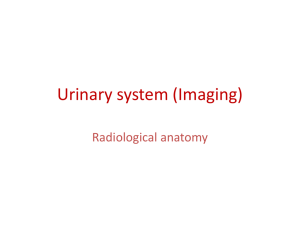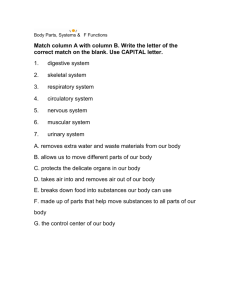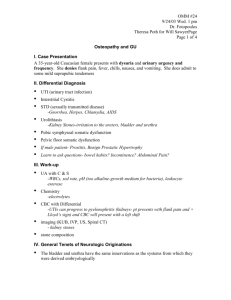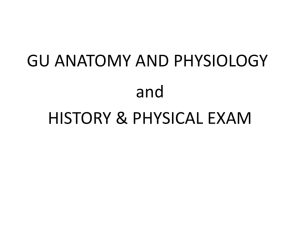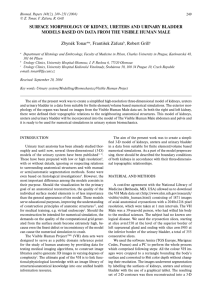Generic - Mosaiced.org
advertisement
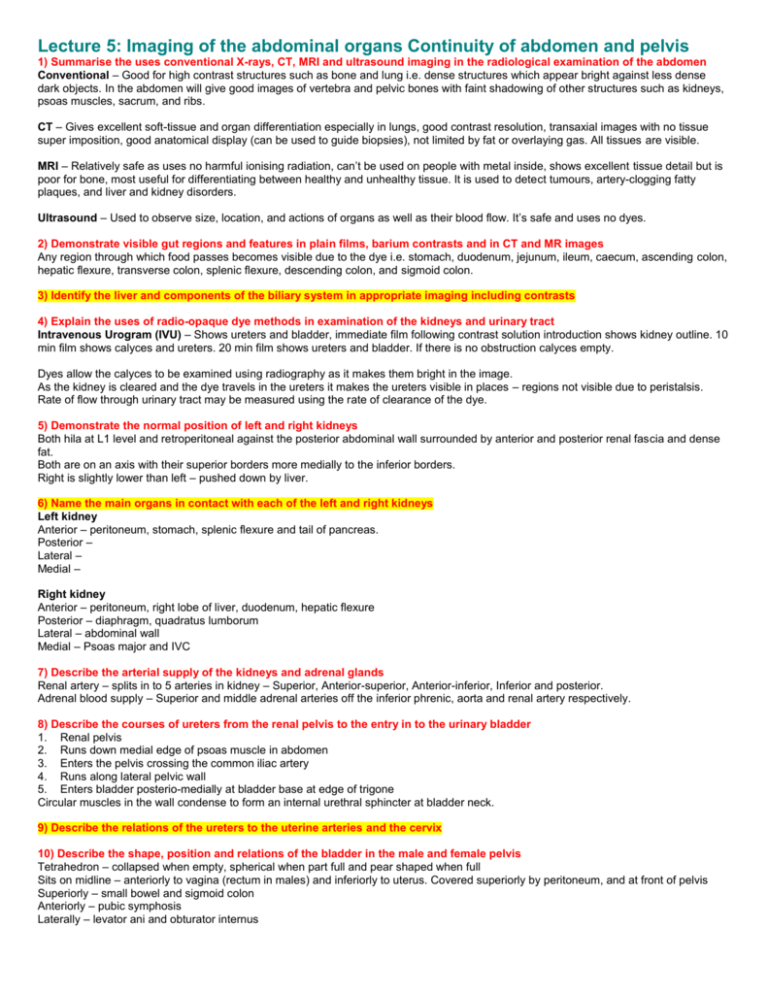
Lecture 5: Imaging of the abdominal organs Continuity of abdomen and pelvis 1) Summarise the uses conventional X-rays, CT, MRI and ultrasound imaging in the radiological examination of the abdomen Conventional – Good for high contrast structures such as bone and lung i.e. dense structures which appear bright against less dense dark objects. In the abdomen will give good images of vertebra and pelvic bones with faint shadowing of other structures such as kidneys, psoas muscles, sacrum, and ribs. CT – Gives excellent soft-tissue and organ differentiation especially in lungs, good contrast resolution, transaxial images with no tissue super imposition, good anatomical display (can be used to guide biopsies), not limited by fat or overlaying gas. All tissues are visible. MRI – Relatively safe as uses no harmful ionising radiation, can’t be used on people with metal inside, shows excellent tissue detail but is poor for bone, most useful for differentiating between healthy and unhealthy tissue. It is used to detect tumours, artery-clogging fatty plaques, and liver and kidney disorders. Ultrasound – Used to observe size, location, and actions of organs as well as their blood flow. It’s safe and uses no dyes. 2) Demonstrate visible gut regions and features in plain films, barium contrasts and in CT and MR images Any region through which food passes becomes visible due to the dye i.e. stomach, duodenum, jejunum, ileum, caecum, ascending colon, hepatic flexure, transverse colon, splenic flexure, descending colon, and sigmoid colon. 3) Identify the liver and components of the biliary system in appropriate imaging including contrasts 4) Explain the uses of radio-opaque dye methods in examination of the kidneys and urinary tract Intravenous Urogram (IVU) – Shows ureters and bladder, immediate film following contrast solution introduction shows kidney outline. 10 min film shows calyces and ureters. 20 min film shows ureters and bladder. If there is no obstruction calyces empty. Dyes allow the calyces to be examined using radiography as it makes them bright in the image. As the kidney is cleared and the dye travels in the ureters it makes the ureters visible in places – regions not visible due to peristalsis. Rate of flow through urinary tract may be measured using the rate of clearance of the dye. 5) Demonstrate the normal position of left and right kidneys Both hila at L1 level and retroperitoneal against the posterior abdominal wall surrounded by anterior and posterior renal fascia and dense fat. Both are on an axis with their superior borders more medially to the inferior borders. Right is slightly lower than left – pushed down by liver. 6) Name the main organs in contact with each of the left and right kidneys Left kidney Anterior – peritoneum, stomach, splenic flexure and tail of pancreas. Posterior – Lateral – Medial – Right kidney Anterior – peritoneum, right lobe of liver, duodenum, hepatic flexure Posterior – diaphragm, quadratus lumborum Lateral – abdominal wall Medial – Psoas major and IVC 7) Describe the arterial supply of the kidneys and adrenal glands Renal artery – splits in to 5 arteries in kidney – Superior, Anterior-superior, Anterior-inferior, Inferior and posterior. Adrenal blood supply – Superior and middle adrenal arteries off the inferior phrenic, aorta and renal artery respectively. 8) Describe the courses of ureters from the renal pelvis to the entry in to the urinary bladder 1. Renal pelvis 2. Runs down medial edge of psoas muscle in abdomen 3. Enters the pelvis crossing the common iliac artery 4. Runs along lateral pelvic wall 5. Enters bladder posterio-medially at bladder base at edge of trigone Circular muscles in the wall condense to form an internal urethral sphincter at bladder neck. 9) Describe the relations of the ureters to the uterine arteries and the cervix 10) Describe the shape, position and relations of the bladder in the male and female pelvis Tetrahedron – collapsed when empty, spherical when part full and pear shaped when full Sits on midline – anteriorly to vagina (rectum in males) and inferiorly to uterus. Covered superiorly by peritoneum, and at front of pelvis Superiorly – small bowel and sigmoid colon Anteriorly – pubic symphosis Laterally – levator ani and obturator internus 11) Explain the anatomical relations of the full urinary bladder 12) Describe the shape, relations and arterial supply of the rectum
